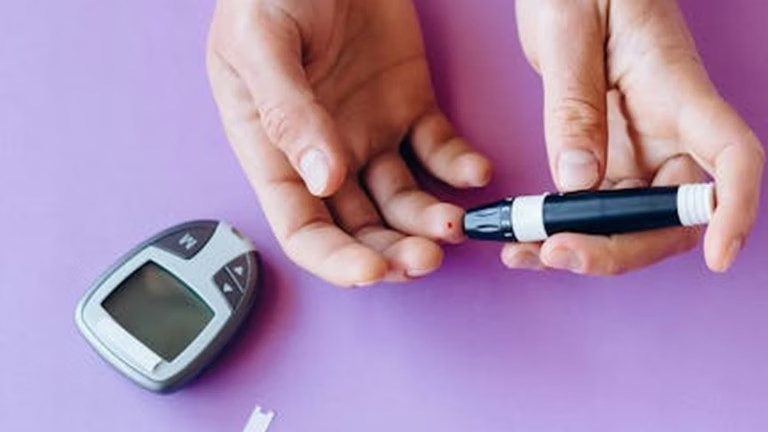Prevent Osteoporosis: Diet & Exercise
Osteoporosis, a condition characterized by weakened bones and increased fracture risk, affects millions worldwide. But the good news is that it’s often preventable. Through a combination of a bone-friendly diet and regular exercise, you can significantly reduce your risk of developing osteoporosis and maintain strong bones throughout your life. This blog post will delve into the specifics of how diet and exercise can help you prevent osteoporosis.
Understanding Osteoporosis
Osteoporosis occurs when Bone density decreases, making bones brittle and more prone to fractures. While it can affect people of all ages, it’s most common in older adults, particularly women after menopause. According to the National Osteoporosis Foundation, approximately 10 million Americans have osteoporosis and another 44 million have low bone density, placing them at increased risk.
Risk Factors for Osteoporosis
Several factors can increase your risk of developing osteoporosis, including:
- Age: Bone density naturally declines with age.
- Gender: Women are more likely to develop osteoporosis than men, especially after menopause.
- Family history: Having a parent or sibling with osteoporosis increases your risk.
- Race: People of Caucasian and Asian descent are at higher risk.
- Body size: Individuals with smaller body frames are at higher risk.
- Certain medical conditions: Conditions like rheumatoid arthritis, celiac disease, and inflammatory bowel disease can increase your risk.
- Medications: Long-term use of corticosteroids, some anti-seizure medications, and certain cancer treatments can weaken bones.
- Lifestyle factors: Poor diet, lack of exercise, smoking, and excessive alcohol consumption can contribute to bone loss.
The Power of Diet for Bone Health
A well-balanced diet rich in specific nutrients is crucial for building and maintaining strong bones. Calcium and vitamin D are particularly important, but other nutrients like vitamin K, magnesium, and protein also play a role in bone health.
Calcium: The Building Block of Bones
Calcium is the most abundant mineral in the body and a key component of bone tissue. Aim to get adequate calcium through your diet. Recommended daily intake varies by age and gender, but generally, adults need around 1000-1200 mg per day.
Good sources of calcium include:
- Dairy products: Milk, yogurt, and cheese are excellent sources.
- Leafy green vegetables: Kale, collard greens, and spinach contain calcium, although it may not be as readily absorbed as calcium from dairy.
- Fortified foods: Many foods, such as orange juice, cereals, and plant-based milk alternatives, are fortified with calcium.
- Canned fish with bones: Sardines and salmon with edible bones are good sources.
Vitamin D: The Calcium Absorber
Vitamin D helps your body absorb calcium from your diet. Without enough vitamin D, your body can’t effectively use the calcium you consume, even if you’re getting plenty. The recommended daily intake of vitamin D is typically 600-800 IU for adults.
Sources of vitamin D include:
- Sunlight: Your skin produces vitamin D when exposed to sunlight. However, factors like skin pigmentation, sunscreen use, and time of year can affect vitamin D production.
- Fatty fish: Salmon, tuna, and mackerel are good sources.
- Fortified foods: Milk, cereal, and orange juice are often fortified with vitamin D.
- Vitamin D supplements: If you’re not getting enough vitamin D from other sources, a supplement may be necessary.
Other Essential Nutrients for Bone Health
While calcium and vitamin D are the stars, other nutrients also contribute to bone health:
- Vitamin K: Important for bone mineralization. Found in leafy green vegetables, broccoli, and Brussels sprouts.
- Magnesium: Plays a role in bone structure and calcium regulation. Found in nuts, seeds, whole grains, and leafy green vegetables.
- Protein: Essential for bone matrix formation. Found in meat, poultry, fish, beans, lentils, and tofu.
Exercise for Strong Bones
Exercise is not only beneficial for your overall health but also plays a vital role in building and maintaining strong bones. Weight-bearing and muscle-strengthening exercises are particularly effective for preventing osteoporosis.
Weight-Bearing Exercises
Weight-bearing exercises force your body to work against gravity, which stimulates bone growth. Examples include:
- Walking
- Jogging
- Dancing
- Hiking
- Stair climbing
- Tennis
Muscle-Strengthening Exercises
Muscle-strengthening exercises, also known as resistance training, help build muscle mass, which in turn supports bone strength. Examples include:
- Lifting weights
- Using resistance bands
- Bodyweight exercises like push-ups, squats, and lunges
Exercise Recommendations
Aim for at least 30 minutes of weight-bearing exercise most days of the week. Include muscle-strengthening exercises at least twice a week. Consult with your doctor or a physical therapist to determine the best exercise program for you, especially if you have any underlying health conditions.
Lifestyle Changes to Prevent Osteoporosis
In addition to diet and exercise, certain lifestyle changes can help prevent osteoporosis:
- Quit smoking: Smoking weakens bones and increases the risk of fractures.
- Limit alcohol consumption: Excessive alcohol intake can interfere with calcium absorption and bone formation.
- Maintain a healthy weight: Being underweight can increase your risk of osteoporosis.
- Get regular bone density screenings: Bone density tests can help detect osteoporosis early, allowing for timely intervention.
Case Study: A Success Story
Meet Sarah, a 60-year-old woman diagnosed with osteopenia (low bone density). After consulting with her doctor and a registered dietitian, she implemented a bone-friendly diet rich in calcium and vitamin D. She also started a regular exercise program that included walking, strength training, and yoga. After two years, Sarah’s bone density improved significantly, and she reduced her risk of developing osteoporosis. This is just one example of how diet and exercise can make a real difference in bone health.
References
-
Harvard T.H. Chan School of Public Health Nutrition Source
– Evidence-based nutrition guidance from Harvard researchers. -
Academy of Nutrition and Dietetics
– Professional nutrition resources and dietary guidelines. -
Centers for Disease Control and Prevention Nutrition
– Government nutrition recommendations and research.
Conclusion
Preventing osteoporosis is a lifelong journey that starts with making informed choices about your diet and exercise habits. By prioritizing strong bones through a balanced diet, regular physical activity, and healthy lifestyle choices, you can significantly reduce your risk of developing osteoporosis and enjoy a healthier, more active future. Remember to consult with your healthcare provider for personalized advice and guidance on bone health.






